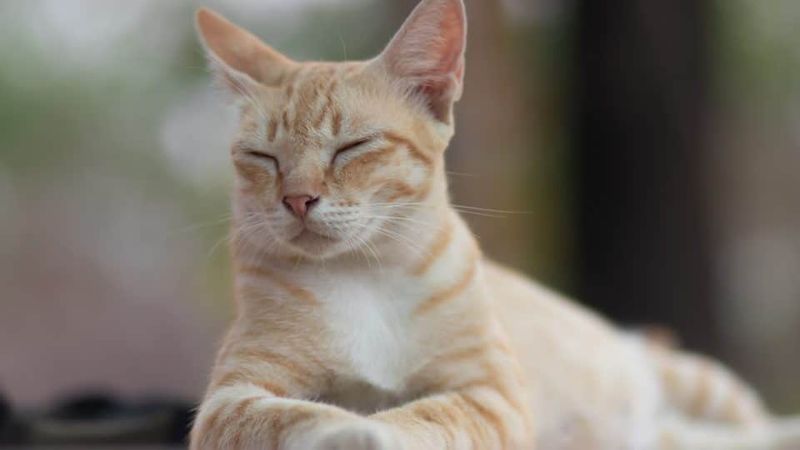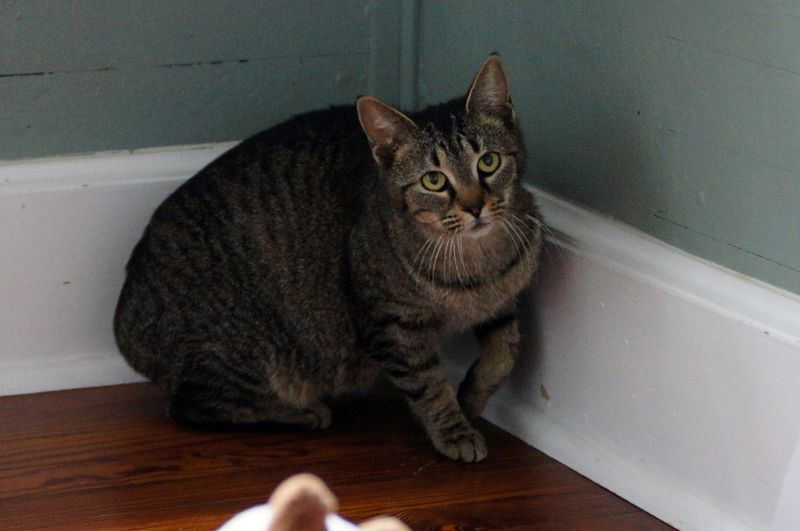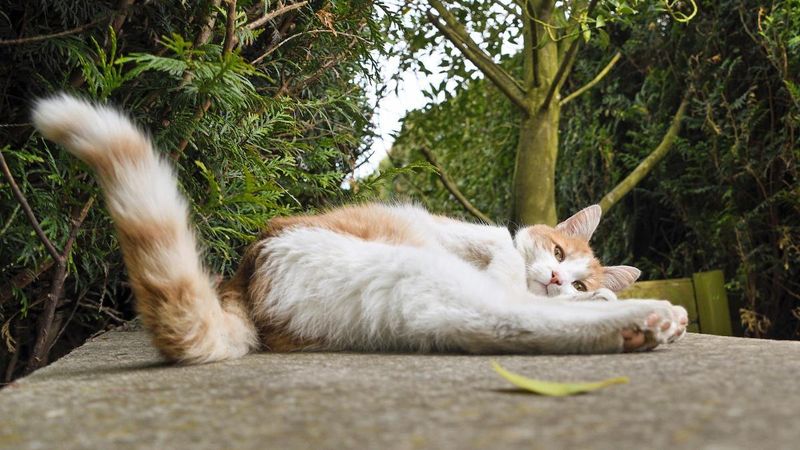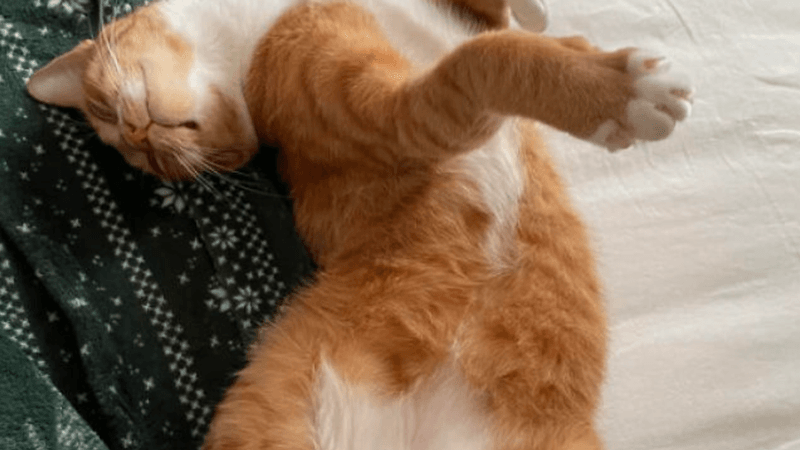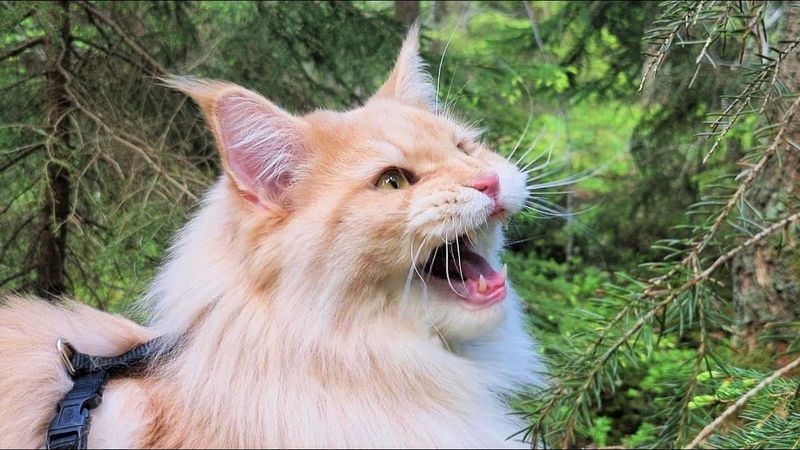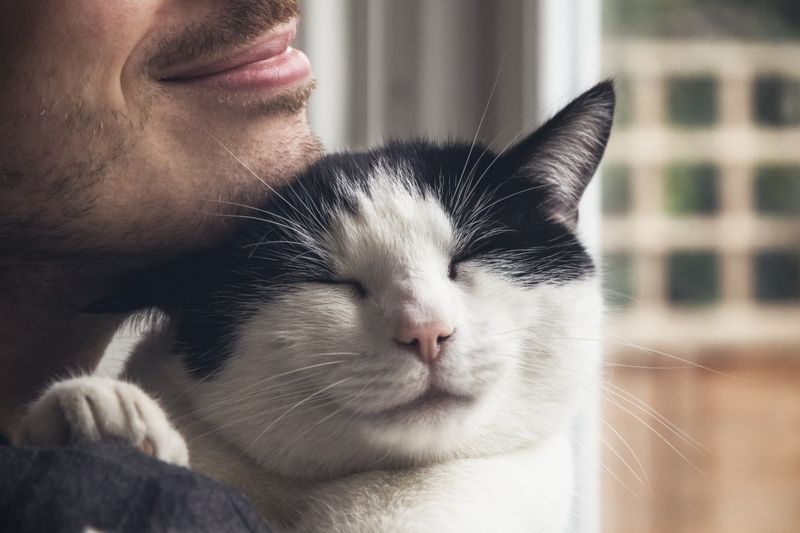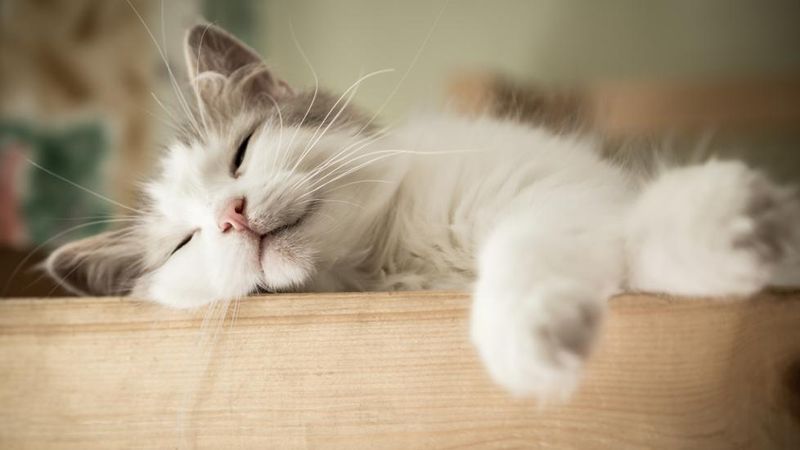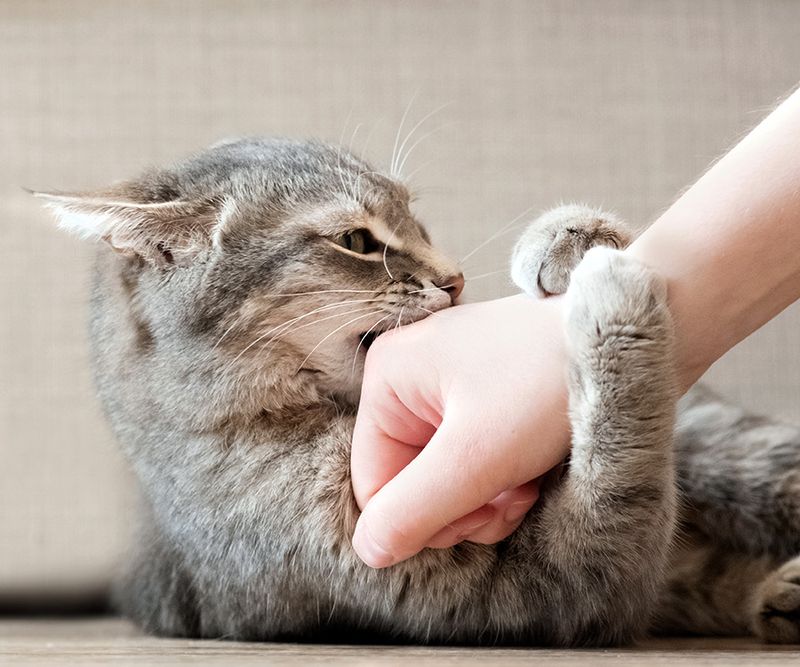📖 Table of Content:
- 1. Slow Blinking
- 2. Tail Tucked Under Body
- 3. Puffed-Up Tail
- 4. Ears Pinned Back
- 5. Slow Wagging or Flicking Tail Tip
- 6. Exposing Belly
- 7. Chirping or Trilling
- 1. Slow Blink Back
- 2. Respect Their Space
- 3. Reduce Stimuli
- 4. Stop Petting or Move Away
- 5. Pause Interaction
- 6. Avoid the Belly Trap
- 7. Acknowledge with Voice or Eye Contact
While many cat owners learn to interpret a few common behaviors—like purring or meowing—there’s an entire hidden language that remains unnoticed by even the most loving pet parents. Missing these signs can lead to miscommunication, stress for your cat, or even behavioral issues that seem to come out of nowhere.
Understanding your cat’s body language opens the door to a deeper connection and a more harmonious home environment. These nonverbal cues reveal your cat’s emotions, from joy and trust to fear and irritation, and responding correctly strengthens your bond while reducing misunderstandings. Instead of guessing what your cat wants or feels, you’ll gain insight into their internal world, making life better for both of you.
With that in mind, here are seven commonly overlooked feline behaviors and exactly how you should respond to each one. These observations and reactions can completely change the way you interact with your cat, whether you’re a new pet owner or a seasoned feline aficionado.
1. Slow Blinking
When your cat locks eyes with you and slowly blinks, it’s not drowsiness—it’s a gesture of affection and trust. This movement is often referred to as a “cat kiss,” and it’s their way of saying they feel safe and calm in your presence. Felines don’t engage in prolonged eye contact with those they see as a threat, so if your cat blinks at you slowly, it means they’re inviting peaceful interaction. Most people overlook this and miss a chance to reciprocate the trust. To respond, gently return the slow blink while keeping your body language soft and non-threatening. This mutual exchange can help deepen your bond and build emotional trust. Over time, your cat will likely offer the gesture more frequently, reinforcing the relationship in a subtle but powerful way.
2. Tail Tucked Under Body
Noticing your cat with its tail wrapped tightly under its body is a silent signal of unease or anxiety. This pose is a defensive, protective stance indicating that your cat feels vulnerable or uncertain. It might occur during a vet visit, when strangers are in the house, or after a loud noise. While it’s easy to dismiss as a resting posture, it actually suggests your cat needs a sense of safety and control. The best response is to give your cat space while maintaining a calm environment—avoid forcing interaction. Allowing them to retreat to a quiet, familiar area can do wonders for their stress levels. Recognizing this behavior early helps prevent escalation into aggression or hiding.
3. Puffed-Up Tail
A cat with a bushy, puffed-up tail is having a moment of extreme arousal—often fear or agitation—not a sudden burst of playfulness. This reaction is part of their instinctive defense mechanism to make themselves appear larger in the face of a threat. It’s especially common during sudden encounters, such as seeing another animal or hearing a startling noise. Many people misinterpret it as excitement or goofy behavior, but the cat is usually quite distressed. If you see this, avoid touching or approaching your cat, and instead try to minimize the stressor. Creating physical distance and speaking softly can help them calm down. A warm, safe hideaway can offer the comfort they need to return to baseline.
4. Ears Pinned Back
Pinned-back ears can appear in a flash and are one of the most important cues of discomfort or aggression. When your cat flattens its ears against its head, it’s preparing to protect itself or lash out, usually in response to something that’s made them feel threatened. This sign often precedes swatting, hissing, or biting, yet it’s frequently missed due to how subtle it can be. You should respond by stopping whatever interaction is happening—whether petting, holding, or playing—and give your cat a break. Redirecting their attention to a toy or letting them walk away freely shows respect for their boundaries. Reading this cue correctly prevents unnecessary conflict and helps build mutual respect over time.
5. Slow Wagging or Flicking Tail Tip
A slow tail wag or twitching tail tip—especially when your cat is otherwise still—is usually a sign of brewing irritation or intense focus. Contrary to dogs, for whom wagging often signals happiness, a cat’s tail movements can convey displeasure. This behavior might show up when they’re being petted too long or while stalking imaginary prey. Many people miss this warning sign and continue interacting until the cat lashes out. The right move is to stop what you’re doing and observe the situation: is the cat hunting, annoyed, or overstimulated? Giving your cat space during these moments avoids conflict and lets them maintain control over their environment. Subtle changes like this help prevent sudden scratches or swats.
6. Exposing Belly
Seeing a cat roll onto its back and expose its belly might seem like an open invitation for a rub—but it’s not always that simple. This gesture shows that your cat feels safe enough to let its guard down, but it doesn’t necessarily mean it wants to be touched. In fact, many cats dislike belly rubs and may respond with a quick swat or bite. A better way to interpret this pose is as a show of trust rather than an offer for contact. If you want to interact, try petting your cat’s head or chin instead. Watch their reaction carefully to gauge comfort. Respecting this boundary builds a more respectful and trusting relationship.
7. Chirping or Trilling
A chirp or trill from your cat isn’t random noise—it’s a delightful, often overlooked sign of excitement or a friendly greeting. These high-pitched sounds are commonly used by mothers to call their kittens, and adult cats may direct them at their humans to get attention or express happiness. It’s an invitation to engage, whether that means following them, starting a play session, or just acknowledging their presence. Responding with a cheerful voice or soft petting can reinforce the positive moment. Many owners ignore chirps, not realizing their cat is reaching out socially. Embracing these vocal cues encourages more open communication and shows your cat that you’re listening.
1. Slow Blink Back
Returning your cat’s slow blink is one of the most understated yet powerful ways to show you care. Try softly narrowing your eyes, holding the gaze for a moment, then gently closing and opening them again. This mimics your cat’s behavior and communicates that you’re relaxed and not a threat. Avoid making any sudden movements or loud noises while doing this—it should feel like a calm exchange. You don’t need to move closer or initiate petting; the blink itself is enough. In time, your cat may start to offer this behavior more frequently, signaling a growing sense of trust. It’s a silent conversation that builds emotional connection without a single word.
2. Respect Their Space
Respecting your cat’s boundaries when you see this posture is essential for their emotional well-being. The tucked tail tells you they’re uncomfortable or afraid, and the best support you can give is distance and calm. Avoid reaching for them or coaxing them into interaction—they need control over their space. You might quietly place a soft blanket or a familiar toy nearby, but let them decide when it’s safe to re-engage. Keep your voice soft and your movements slow during this time. Reducing surrounding noise or turning off distractions like the TV can also help ease their stress. When your cat does begin to emerge, reward that courage with gentle praise or treats.
3. Reduce Stimuli
Backing away is often the wisest move when you notice your cat’s tail bristling with fear. The goal is to reduce whatever triggered their reaction—be it a loud noise, an unfamiliar person, or another pet. Avoid staring or trying to pick them up, as that will only heighten their fear. Instead, ensure they have a safe escape route to a preferred hiding place or room. Speak softly and avoid sudden movements as they work through their emotional state. In some cases, you may want to create a “safe zone” in the house with calming pheromone sprays or soft lighting. Once they calm down, you can offer food or play to help them reset. Over time, this teaches them that you’re a safe presence, even during stressful events.
4. Stop Petting or Move Away
Halting whatever you’re doing at the first sign of pinned ears is crucial to avoid conflict or injury. These backward ears are often your cat’s final warning before a swat or bite. Pull your hand away, step back, and give them a moment to decompress. You might also try redirecting their energy with a feather toy or tossing a treat across the room to reset the situation. Don’t scold or try to force affection—this could make them more defensive. Giving your cat the option to walk away restores their sense of control. Over time, your cat will come to associate your presence with respect, not pressure. That trust makes future interactions smoother and more rewarding.
5. Pause Interaction
Choosing to pause your interaction at the first flick of the tail tip can prevent a negative encounter. This movement signals that your cat’s mood is shifting, often from content to overstimulated. If you’re petting them, stop and let them process; they may stay nearby or move away—either is okay. Watch for other signs like tensing muscles or a low growl, which might follow. If your cat was in play mode, consider switching to a more active toy to burn off that extra energy. Giving them options and space prevents frustration and shows you’re attentive to their needs. Long-term, this sensitivity makes your cat feel safer and more understood.
6. Avoid the Belly Trap
Admiring your cat’s exposed belly without immediately reaching for it shows that you respect their personal comfort. While it may be tempting, the belly is one of the most vulnerable parts of their body, and many cats guard it instinctively. Instead, you can softly speak to your cat or gently rub their head or cheeks—areas more commonly accepted for contact. Pay attention to their body tension and any tail flicks that might follow. If you’re unsure whether they’re inviting touch, hold back and wait for them to initiate. Showing restraint communicates safety and awareness. Over time, your cat may actually begin to invite more physical affection.
7. Acknowledge with Voice or Eye Contact
Responding to your cat’s chirps with affection or interaction sends a clear message that their attempts at communication are valued. Try answering them verbally in a warm tone or approaching with soft steps to initiate play or petting. Sometimes they’ll chirp while leading you somewhere—like to a food bowl or a favorite spot—so be prepared to follow. Acknowledging these sounds not only reinforces your bond but also encourages future engagement. This is a moment to connect, and it can be particularly endearing when you treat it as a form of conversation. Even a gentle head scratch or eye contact can feel validating to your cat. They’ll remember that you listened—and they’ll chirp again.

